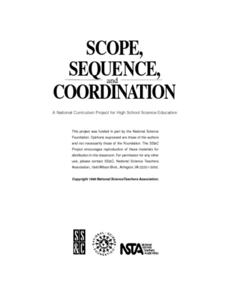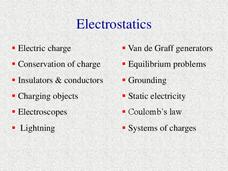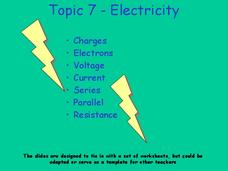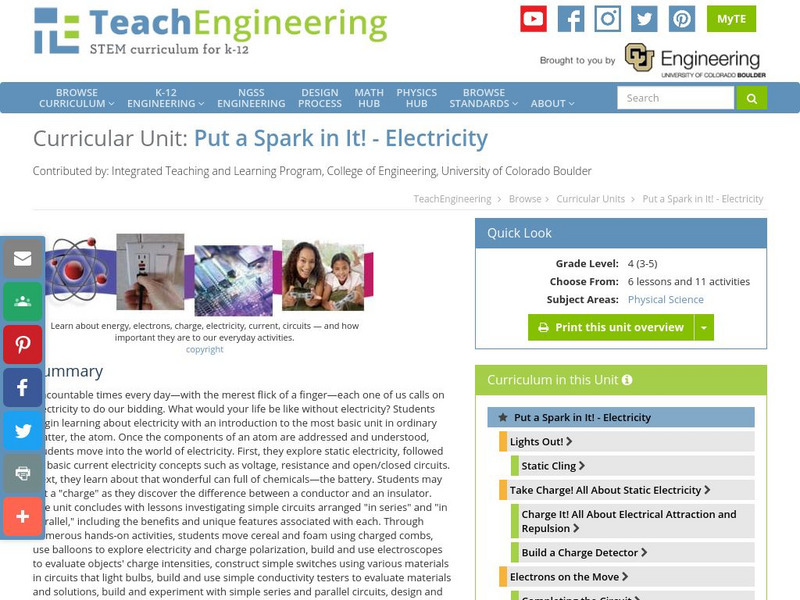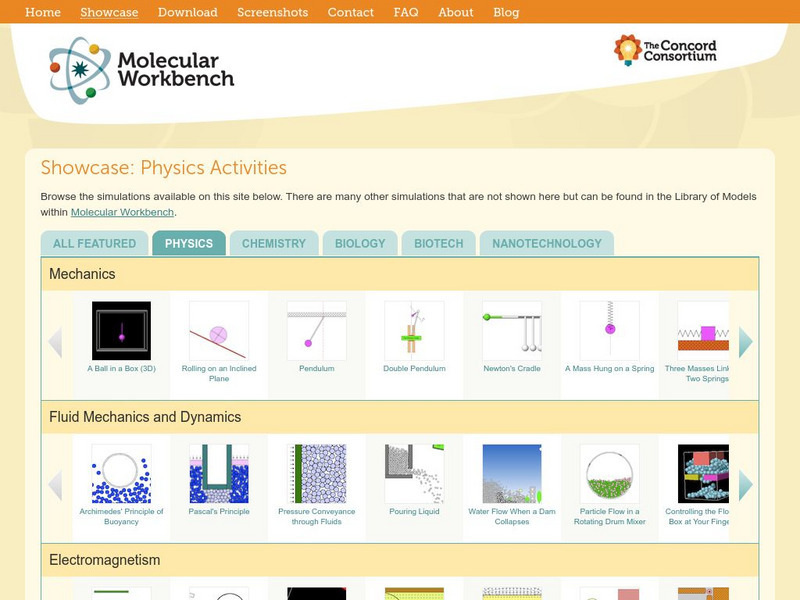Curated OER
Electric Charge and Static Electricity
Begin with the classic static electricity demonstrations: the behavior of charged balloons and metal leaves of an electroscope. Then move on to test the electrical conductivity of various materials. Give physics pupils a charge with...
Benjamin Franklin Tercentenary
Let’s Throw an Electric Science Party!
Are you looking for a shockingly good lesson plan? Check out one that has middle schoolers recreate four of Benjamin Franklin's experiments. Groups investigate, observe, and draw conclusions about static electricity and electrical...
Curated OER
Static Electricity: Matching
Discovery Education has provided a series of quick quizzes on several topics. Here is one on static electricity. Young scientists match eight terms to their definitions. You can view the solution right from the page, so if you want to...
Curated OER
Fall 2003 Midterm Exam #1
Electricity is the focus of this college-level midterm exam. It requres physics learners to answer multiple choice and short answer questions in addition to evaluating several diagrams and graphs. This is appropriate for most high school...
Curated OER
Electricity and Magnetism
A clear PowerPoint that gives many important facts regarding the topic of static electricity and charge is here for your students. Note: Although the title has the word "magnetism" in it, details of that concept are not covered.
Curated OER
Electroscope
Students examine what an electroscope is and who invented it. In this electrical lesson students build their own Emergency Radiation detector Electroscope.
Curated OER
Coulomb's Law and Induced Polarization
Engage your aspiring physicists in a series of lab activities directied at demonstrating the behavior of electric force. In completing these exercises, learners will explore Coulomb's and Gauss's Laws. Well-written directions to four...
Urbana School District
Electrostatics
Why did lightning shock the man? Because it didn't know how to conduct itself. Presentation covers electric charges, insulators, conductors, electroscopes, lightning, generators, grounding, static electricity, and more. Presentation...
Curated OER
Electricity
Each of these slides presents the basic scientific details and situations where charge, or static may appear. Handouts of the empty PowerPoint slides could be provided so that students could work through these examples and correctly...
Curated OER
What Is Electricity
Fourth graders develop an understanding of static electricity and discover how to detect a charge by using electroscopes. In this electricity lesson, 4th graders complete a lab on electricity and discuss the results with the...
Curated OER
TE Activity: Build a Charge Detector
Pupils examine how electrical force takes place between two objects by building an electroscope. They apply the electroscope to determine an objects' charge intensity and to see what factors influence electric force.
Curated OER
The Invention of Faraday Cage
Students demonstrate how Faraday's cage work by building their own electroscope. In this physics instructional activity, students explain how Faraday's cage work. They cite several applications of this principle in the real world.
College Board
2018 AP® Physics 2: Algebra-Based Free-Response Questions
While the AP Physics 2 test maintains the reputation for one of the most difficult AP exams, scholars feel better prepared after practicing free-response questions on currents, conservation of energy, and displacement. The College Board...
PBS
Pbs Learning Media: Testing for Static Electricity
In this video segment adapted from ZOOM, cast members show you how to make your very own electroscope. You can use it to find out if an object is electrically charged. [4:17]
Exploratorium
Exploratorium: Science Snacks: Physics/electricity & Magnetism
Exploratorium Science Snacks are miniature science exhibits and experiments that can be made with common, inexpensive, easily available materials. These electricity snacks represent a set of devices that you can build and experiment with...
TeachEngineering
Teach Engineering: Put a Spark in It! Electricity
Uncountable times every day "with the merest flick of a finger"each one of us calls on electricity to do our bidding. What would your life be like without electricity? Students begin learning about electricity with an introduction to the...
Concord Consortium
Concord Consortium: Molecular Workbench Showcase: Physics, Electromagnetism
Students can use these simulations to understand concepts in electromagnetism. Simulations are available on the following concepts: Lorentz Force, The Hall Effect, capacitor, conductor, transistor, cyclotron, static electricity....
Discovery Education
Discovery Education: 3 M Young Scientist Lab: Balloon Electroscope
Use balloons to make an electroscope and witness the effect of static charges before your very eyes.
National High Magnetic Field Laboratory
Magnet Academy: Gold Leaf Electroscope 1787
For centuries, the electroscope was one of the most popular instruments used by scientists to study electricity. Abraham Bennet first described this version in 1787.
Concord Consortium
The Concord Consortium: Molecular Workbench: Needle Electroscope
Adjust the electrical change that is present in this needle electroscope simulation.
Other
Museum of Science: Simple Electroscope
Resource explains how to build and use a simple electroscope.
Physics Classroom
The Physics Classroom: Static Electricity Review
This review from the Glenbrook South High School provides a series of questions on various topics associated with static electricity (such as electrical insulation). Answers and explanations are hidden, yet easily accessed from within a...
TeachEngineering
Teach Engineering: Build a Charge Detector
In this hands-on activity, students explore the electrical force that takes place between two objects. Each student builds an electroscope and uses the device to draw conclusions about objects' charge intensity. Students also determine...
University of Kentucky
Elecroscope Lab
This site is actually a lab from the University of Kentucky Electrical Engineering Department. It is an excellent experiment that can be done at the high school level.
